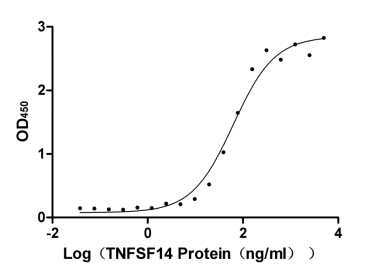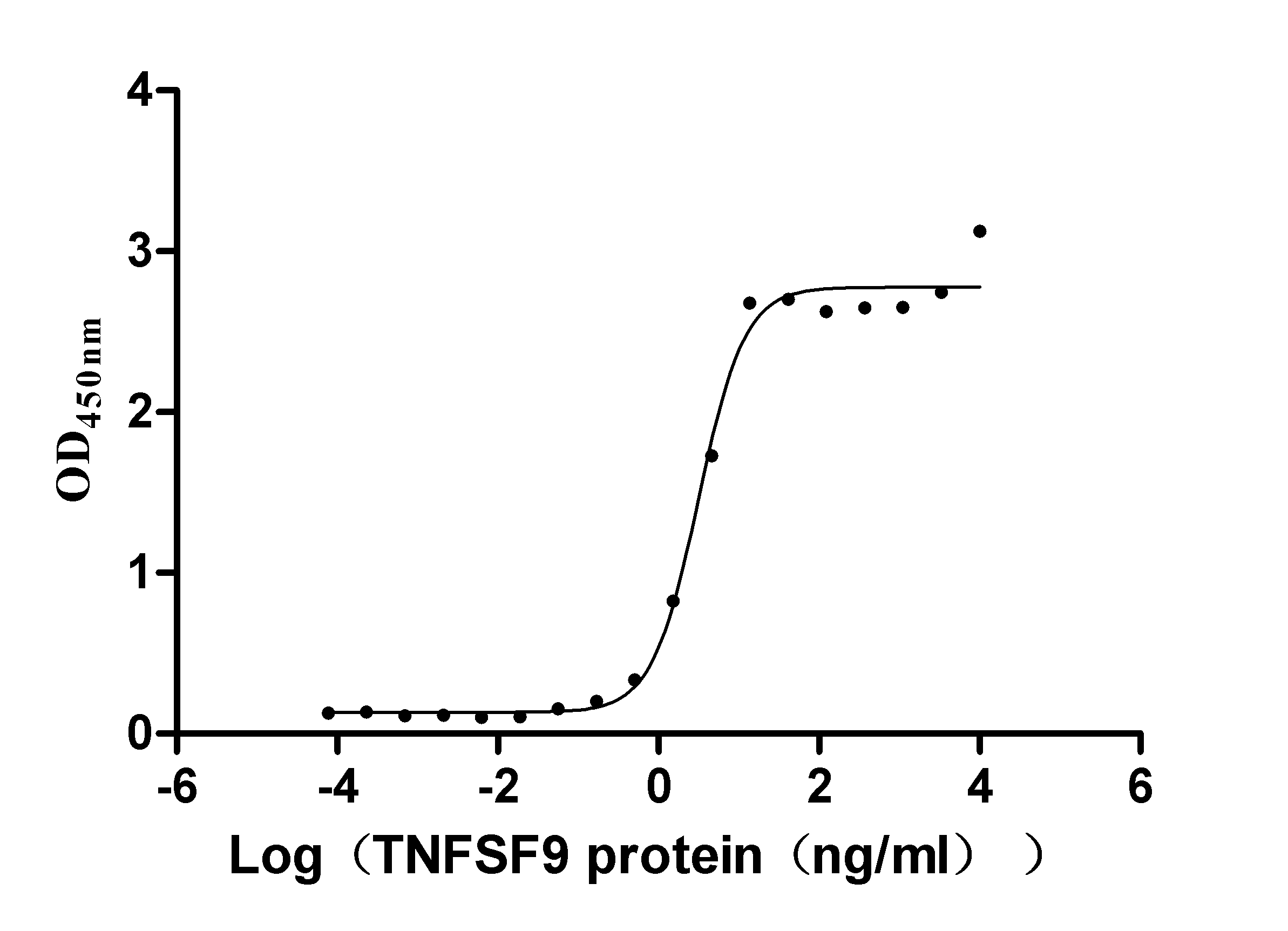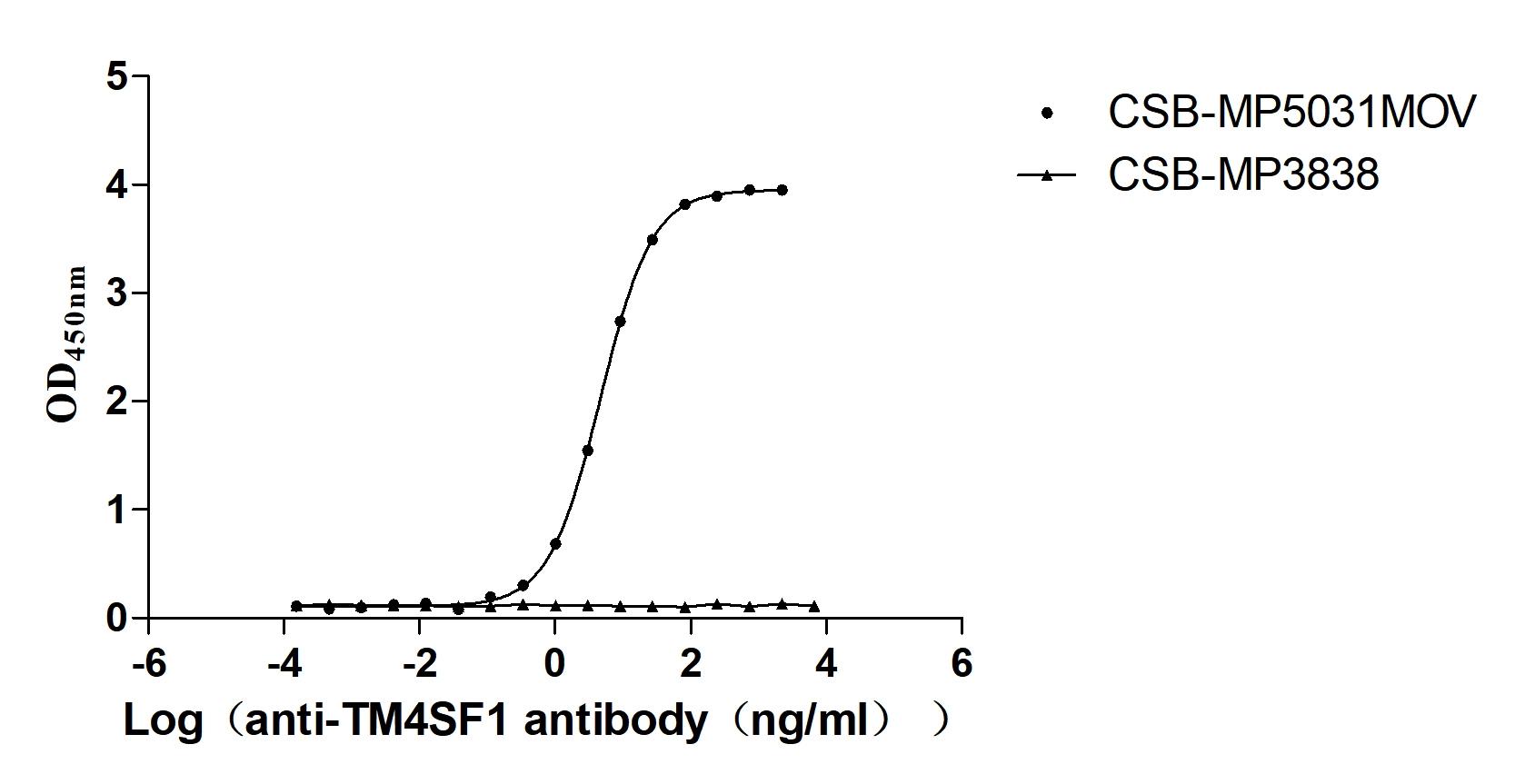Recombinant Mouse Vasoactive intestinal polypeptide receptor 1 (Vipr1)
-
货号:CSB-CF025859MO
-
规格:
-
来源:in vitro E.coli expression system
-
其他:
产品详情
-
基因名:
-
Uniprot No.:
-
别名:Vipr1; Vasoactive intestinal polypeptide receptor 1; VIP-R-1; Pituitary adenylate cyclase-activating polypeptide type II receptor; PACAP type II receptor; PACAP-R-2; PACAP-R2; VPAC1
-
种属:Mus musculus (Mouse)
-
蛋白长度:Full Length of Mature Protein
-
表达区域:31-459
-
氨基酸序列ASPHQECEYLQMIEKQRQQCLEEAQLENETTGCSKMWDNLTCWPTTPWGQVVVLDCPLIF QLFSPIHGYNISRNCTEEGWSQLEPGPYHIACGLNDRASSMDEQQQTEFYDAVKTGYTIG YSLSLASLLVAMAILSLFRKLHCTRNYIHMHLFMSFILRATAVFIKDMALFNNGETDHCS EASVSCKAAVVFFQYCVMANFFWLLVEGLYLHTLLAVSFFSERKYFWGYILIGWGVPSVF IMIWTIVRIHFEDFGCWDTIINSSLWWIIKGPILISILVNFILFICIIRILVQKLRPPDI GKNDSSPYSRLAKSTLLLIPLFGVHYVMFAFFPDNFKAQVKMVFELVVGSFQGFVVAILY CFLNGEVQAELRRKWRRWHLQGVLGWSSKSQHPWGGSNGVSCSTQVSMLTRVSPSARRSS SFQAEVSLV
Note: The complete sequence including tag sequence, target protein sequence and linker sequence could be provided upon request. -
蛋白标签:N-terminal 10xHis-tagged
-
产品提供形式:Liquid or Lyophilized powder
Note: We will preferentially ship the format that we have in stock, however, if you have any special requirement for the format, please remark your requirement when placing the order, we will prepare according to your demand. -
缓冲液:Lyophilized from Tris/PBS-based buffer, 6% Trehalose, pH 8.0
-
储存条件:Store at -20°C/-80°C upon receipt, aliquoting is necessary for mutiple use. Avoid repeated freeze-thaw cycles.
-
保质期:The shelf life is related to many factors, storage state, buffer ingredients, storage temperature and the stability of the protein itself.
Generally, the shelf life of liquid form is 6 months at -20°C/-80°C. The shelf life of lyophilized form is 12 months at -20°C/-80°C. -
货期:Basically, we can dispatch the products out in 1-3 working days after receiving your orders. Delivery time may differ from different purchasing way or location, please kindly consult your local distributors for specific delivery time.Note: All of our proteins are default shipped with normal blue ice packs, if you request to ship with dry ice, please communicate with us in advance and extra fees will be charged.
-
注意事项:Repeated freezing and thawing is not recommended. Store working aliquots at 4°C for up to one week.
-
Datasheet & COA:Please contact us to get it.
相关产品
靶点详情
-
功能:This is a receptor for VIP. The activity of this receptor is mediated by G proteins which activate adenylyl cyclase.
-
基因功能参考文献:
- This study demonstrated that VPAC1 receptor (Vipr1)-deficient mice exhibit ameliorated experimental autoimmune encephalomyelitis, with specific deficits in the effector stage. PMID: 27357191
- VPAC1R mRNA expression was significantly decreased 3 days after ischemia induced by bilateral common carotid artery occlusion PMID: 22669509
- Cyclophosphamide-induced cystitis decreased VPAC1 receptor transcript expression in the urothelium of WT (4 h, 48 h, & chronic) & NGF-OE mice. PMID: 22700375
- Data support the notion that both VPAC1 and VPAC2 receptors are dynamically regulated by Ikaros, a master transcriptional regulator for thymocyte differentiation, during early thymic development. PMID: 21878358
- Homozygous deletion of VPAC1 resulted in fetal, neonatal, and postweaning death owing to failure to thrive, intestinal obstruction, and hypoglycemia. PMID: 21697765
- VPAC(1)-R activation aggravates atherosclerotic lesion formation in apolipoprotein E-deficient mice through enhanced inflammatory activity in the vessel wall. PMID: 20951679
- VIP and its receptors (VPAC1, VPAC2) were identified in type II taste cells of the taste bud, and VIP knockout mice exhibit enhanced taste preference to sweet tastants. PMID: 20150284
- In contrast, selective VPAC(1) receptor activation shifts NSPC fate toward granule cell neurogenesis without any trophism. PMID: 19650041
- VPAC1 suggested as mediator of the neuroprotective effects of VIP PMID: 11859927
- VIP modulation of neural crest differentiation is mediated via VPAC1 and high expression of VPAC1 induces differentiation in and decreases tumorigenicity of neuroblastoma cells. PMID: 12409228
- VIP attenuated the experimental acute pancreatitis enzymatically and morphologically by inhibiting proinflammatory cytokine production from monocytes mainly through the VPAC1-R. PMID: 15632701
- In neonatal mice, a defect occurs in the signal transduction mechanism of the VPAC-1 VIP receptor and cortical astrocytes from neonatal brains are dysfunctional. PMID: 17401158
- VIP inhibits beta-amyloid protein (Abeta)-induced neurodegeneration by indirectly inhibiting production of a wide panel of inflammatory and neurotoxic agents by activated microglia cells. PMID: 18442091
- Data show that VIP and its receptors, VPAC1R and VPAC2R, are expressed in hippocampus, cortex, amygdala and hypothalamus which are involved in learned behaviors. PMID: 18616823
显示更多
收起更多
-
亚细胞定位:Cell membrane; Multi-pass membrane protein.
-
蛋白家族:G-protein coupled receptor 2 family
-
数据库链接:
KEGG: mmu:22354
STRING: 10090.ENSMUSP00000035115
UniGene: Mm.282007
Most popular with customers
-
Recombinant Human Tumor necrosis factor receptor superfamily member 14 (TNFRSF14), partial (Active)
Express system: Mammalian cell
Species: Homo sapiens (Human)
-
Recombinant Human Tumor necrosis factor ligand superfamily member 9 (TNFSF9), partial (Active)
Express system: Mammalian cell
Species: Homo sapiens (Human)
-
Recombinant Human Desmoglein-3 (DSG3), partial (Active)
Express system: Baculovirus
Species: Homo sapiens (Human)
-
Recombinant Mouse Cytotoxic and regulatory T-cell molecule (Crtam), partial (Active)
Express system: Mammalian cell
Species: Mus musculus (Mouse)
-
Recombinant Macaca fascicularis C-type lectin domain family 4 member C(CLEC4C), partial (Active)
Express system: Mammalian cell
Species: Macaca fascicularis (Crab-eating macaque) (Cynomolgus monkey)
-
Recombinant Macaca fascicularis Transmembrane 4 L6 family member 1 (TM4SF1)-VLPs (Active)
Express system: Mammalian cell
Species: Macaca fascicularis (Crab-eating macaque) (Cynomolgus monkey)
-
Recombinant Human C-C chemokine receptor type 9 (CCR9)-VLPs (Active)
Express system: Mammalian cell
Species: Homo sapiens (Human)



















